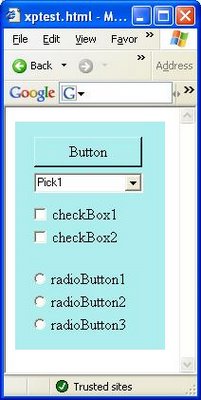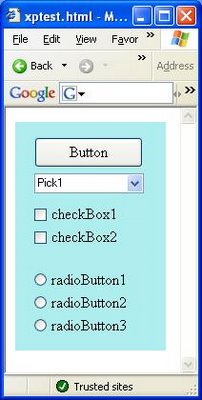I decided to change this behavior to have the new popup window appear on top of the parent window, to make the appearance of the new window more obvious. I knew that the location of the new window could be specified relative to the screen in parameter 3 of the Javascript window.open(URL, windowName, windowFeatures) call in IE using the top and left attributes, like:
window.open('http://localhost/', 'newWindow', 'top=200,left=300')
What I wanted to do was supply top and left attribute values based on an offset of the screen position of the parent browser window. However, it wasn't clear to me how to get the parent window position.
Google searches such as javascript window screen position weren't much help -- no obvious solutions to my question among the first several pages returned. Searching on "location" instead of "position" was even less help, since the results included a lot of keyword collisions with the location (URL) property of the window object.
Eventually I did come up with a quirksmode.org page with the answer I was looking for by searching on "screenX", the attribute used with window.open on Navigator/Mozilla/Firefox to specify the horizontal position of a new window. The solution: In IE, the screenLeft and screenTop properties give you the horizontal and vertical positions of the browser window relative to the screen, respectively. (screenX and screenY are apparentely the equivalent properties in Mozilla, although I haven't tested this myself.)
On a page with frames, self.screenLeft will return the horizontal position of the current frame relative to the screen, whereas self.screenleft will give you the position of the browser window relative to the screen.
Interestingly, support for the screenLeft and screenTop properties apparently was first introduced in Internet Explorer 5. (This is why my copy of The Flamingo was no help in finding the solution -- my old copy is only current through IE 4.) This seems to indicate that in IE 4, you could set the position of a window (either initially in the window.open() call, or later via the window.moveTo() method), but there was no way to get the position of the window!
In any case, I was able to solve my original problem of the IE popup window appearing in the wrong place by getting the screen coordinates of the parent window using calls to top.screenLeft and top.screenTop, then adding a delta to each of those values and using the adjusted values in the call to window.open().





